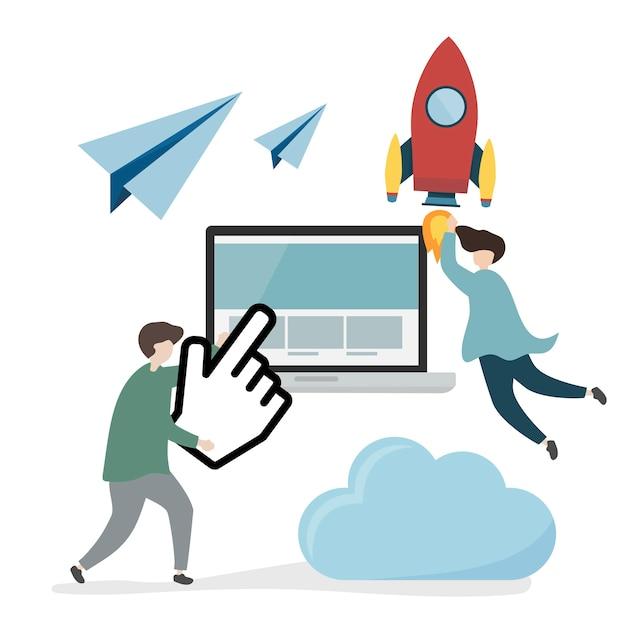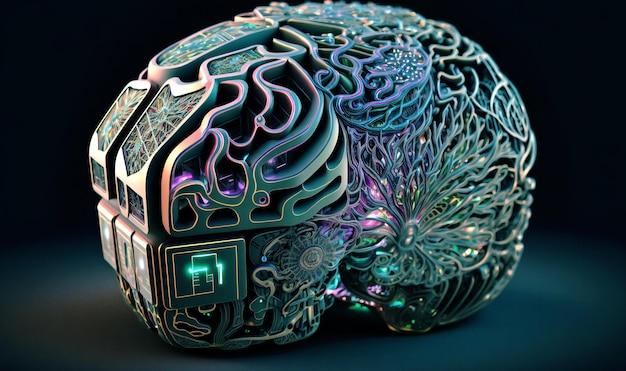In the ever-evolving digital age, the realms of computer science and art have become intricately intertwined, captivating both technophiles and creatives alike. As technology continues to advance at an unprecedented rate, its impact on art becomes increasingly profound. From the creation of digital masterpieces to the utilization of algorithms in artistic processes, computer science has revolutionized the artistic landscape.
Computer science has not only expanded the possibilities of artistic expression but has also facilitated greater accessibility and democratization of art. Through the advent of digital tools and software, artists can now create and manipulate their artworks with unprecedented precision and ease. Additionally, the widespread availability of digital art platforms and social media has allowed artists to showcase their work to a global audience, transcending geographical limitations.
Moreover, computer science has paved the way for innovative collaborations between artists and technology experts, resulting in groundbreaking art forms such as computer-generated imagery (CGI), virtual reality (VR), and interactive installations. These collaborations push the boundaries of traditional art forms, merging creativity with technical prowess and challenging conventional notions of what art can be.
In this blog post, we will delve deeper into the ways computer science impacts art, exploring the symbiotic relationship between technology and artistic expression. We will uncover the influence of computer science on various artistic disciplines, examine the features of computer-generated art, and delve into the transformative effects of software and algorithms on the creative process. Join us on this exciting journey as we discover the dynamic intersection of computer science and art in the year 2023.

How Computer Science and Art Harmoniously Come Together
Art has always been a canvas for human creativity, a medium through which emotions, ideas, and stories are expressed. But in today’s digital age, a new brushstroke has emerged – computer science. Surprisingly, these seemingly contrasting fields have found a way to harmoniously come together, revolutionizing the art world in ways we never thought possible. So, let’s explore how computer science impacts art and uncovers a world of endless possibilities.
The Fusion of Creativity and Algorithms
At first glance, one might struggle to see the connection between computer science and art. After all, isn’t art supposed to be a product of human imagination and emotion? Well, computer science brings a whole new dimension to the creative process. Artists are now embracing algorithms, utilizing programming languages, and leveraging data to enhance their artistic endeavors.
Transforming Ideas Into Visual Reality
With computer science, artists can translate their ideas into stunning visual reality. Through digital art software and 3D modeling programs, artists can create intricate designs and breathtaking visual effects that were once limited to the canvas. From surreal landscapes to mind-bending animations, the fusion of computer science and art opens up new doors for self-expression.
Interactive Art: Engaging Art Lovers
Computer science has also given birth to interactive art, where viewers can actively participate in the artistic experience. Imagine strolling through an art gallery, and suddenly, a motion sensor triggers a painting to come alive or a hologram to appear before your eyes. This integration of technology and art creates an immersive and captivating journey for art enthusiasts, blurring the line between spectator and artist.
The Rise of Digital Art Movements
In the digital age, art no longer needs to be confined to physical mediums. Computer science has led to the rise of digital art movements that challenge traditional notions of creativity, transforming how we perceive and consume art.
Generative Art: Art That Evolves
Generative art, a product of computer algorithms, is shaking up the art world. It involves creating artwork that evolves or changes over time, driven by predefined rules or algorithms. This dynamic form of art engages viewers in unexpected ways and challenges the conventional notion of static artwork. As the algorithms evolve, so does the art, creating an ever-changing experience for the observer.
Virtual Reality: Stepping Into Art
Strap on your virtual reality headset, and get ready to dive into a world where art becomes a tangible reality. With computer science, artists can now create immersive virtual reality experiences that transport viewers into breathtaking virtual worlds. Through this technology, art becomes an interactive journey, pushing the boundaries of spatial perception and sensory engagement.
The Intersection of Art and Science
Art and science have often been seen as polar opposites, but computer science bridges the gap, showcasing their powerful intersection. This fascinating synergy opens up new realms of creativity and discovery.
Data Visualization: Artistic Insights
Data visualization is the marriage of raw data and artistic expression. Through computer science, artists can transform complex data sets into visually stunning representations. Whether it’s mapping global climate patterns or visualizing the human genome, artists can communicate insights in a visually captivating manner, making complex information accessible and engaging to a wider audience.
Algorithmic Music: Soundscapes of the Future
Computer science has also revolutionized the way we experience music. Algorithmic music uses mathematical algorithms to generate unique melodies and harmonies, creating futuristic soundscapes that push the boundaries of traditional composition. This blending of art and science sparks innovation and paves the way for new auditory experiences.
In this ever-evolving digital era, computer science continues to leave its mark on the art world, propelling creativity to new heights. From transforming ideas into visual reality to blurring the lines between artist and viewer, the impact of computer science on art is undeniable. So, embrace the brushstroke of technology and discover the boundless possibilities that arise when art and science unite.

FAQ: How does computer science impact art?
Is RAM a Hardware or Software
RAM, short for Random Access Memory, is a hardware component of a computer. It is like the computer’s short-term memory, allowing it to quickly access and store data that is actively being used. So, next time you marvel at the speed with which your computer handles complex art rendering, thank the hardware gods!
Which is Not Application Software
Let’s play a little game of “Which One Doesn’t Belong?” Here are your options: Word processing software, Graphic design software, Antivirus software, and Ice cream software. Now, unless ice cream has become a vital part of your creative process (impressive if it has), the odd one out here is ice cream software. As much as we’d love a scoop of virtual creamy goodness, it’s just not a thing yet.
What is Computer or Digital Arts
Computer or digital arts are like a marriage between creativity and technology, where the digital canvas becomes an artist’s playground. With the help of computers and software tools, artists can create stunning visuals, animations, and even interactive installations. It’s like giving Picasso a high-tech paintbrush and watching his masterpieces come to life in pixels!
What are the 3 Main Types of Software
Ah, the three amigos of the digital realm: System software, Application software, and Malicious software (not the friendliest of the bunch). System software is the backbone that keeps your computer running smoothly, while application software gives you the power to edit photos, compose music, or design jaw-dropping landscapes. And then there’s malicious software, also known as malware, which we’ll gladly skip discussing here since it’s the party crasher of the software world. Let’s just say it’s not the kind of software you want on your computer.
How does Computer Science Impact Art
Now, hold on to your paintbrushes, because computer science is about to take your artistic journey to a whole new level! With the magic of computer science, art has become infinitely more accessible, versatile, and mind-bogglingly creative. From generating complex algorithms that create intricate patterns to using artificial intelligence (AI) to create mesmerizing digital art, the marriage of computer science and art has birthed a new universe of possibilities. So, whether you’re a painter, sculptor, or digital artist, computer science is a game-changer that can enhance your artistic expression beyond your wildest dreams!
That wraps up our FAQ-style deep dive into how computer science impacts art. Now go forth, artists of the digital realm, and let your creativity soar with the aid of technology!
